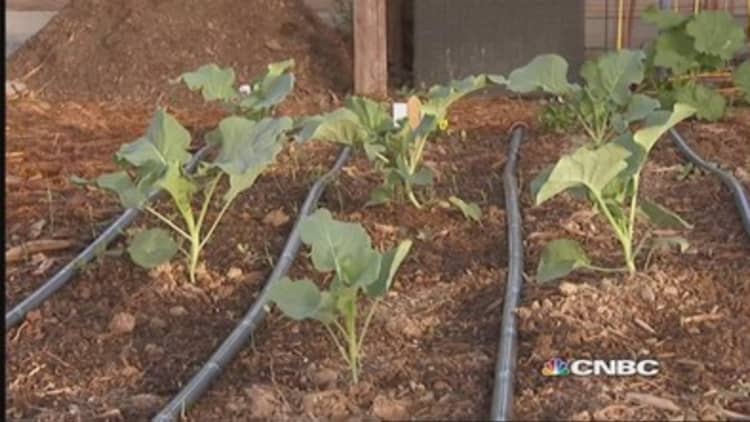
First there was the Ansari X Prize and Lunar X Prize. Now there's the Desal Prize.
The goal of the competition, which kicks off Thursday, is to create desalination technology that makes saltwater suitable for drinking or farming. The contest's purpose is to give a boost to the developing world—and maybe to drought-stricken California.
"We looked at the landscape for already-existing technologies," said Ku McMahan, team lead for Securing Water for Food at USAID's U.S. Global Development Lab, which is funding the competition. "And ... what we chose then to do was partner with the U.S. Bureau of Reclamation to put together a prize to try to further the market and create some of these technologies and then have them compete together in New Mexico."
Experts point out that desalination alone will not solve the problems caused by California's four-year drought. But the technology can make a difference, particularly for individual towns or cities.
Five engineering teams are competing in Alamogordo, New Mexico, for the chance to win $200,000 in prize funds by coming up with the best way to turn brackish water, or briny inland water, into water that's drinkable by humans and crops alike. (Tweet This) The head-to-head competition will go through Saturday, and the contenders have a chance to receive another $400,000 in U.S. funds to implement the desalination technology in developing countries.
Read MoreSanta Barbara hopes desalination will help it beat drought
"The reason we're partnering with the U.S. Bureau of Reclamation is (that) the same issues faced in India, Bangladesh and other parts of the developing world are very similar to the issues affecting the U.S. Southwest, particularly California," Ku said.
Results are set to be announced around April 22, in conjunction with Earth Day.
The federal government spent a total of about $1.6 million to put the competition together. It retains the right to license the technology, although Ku said the actual technology will be owned by the teams or companies.
Approximately 70 applicants from 29 countries applied to participate in the Desal Prize, and a panel of judges winnowed them down to the finalists. The teams remaining are Atlantis Technologies, EconoPure, GreenDesal, Jain Irrigation Systems/MIT, and University of Texas at El Paso's Center for Inland Desalination Systems.
Read MoreAmid drought, California farmers in 'survival mode'
The winner of the Desal Prize will field-test a machine that runs solely on renewable energy and that produces no more than 15 percent wastewater. Additionally, judges will look at whether it's cost-efficient, durable and easy to maintain.
Brackish water was selected by organizers—as opposed to seawater—because it's commonly found in inland areas and unfit for human consumption or crops. The poor quality of the water may be the result of farming overuse, or where natural conditions give the water more salinity.
Moving beyond what's done already

Hundreds of brackish groundwater desalination plants in the U.S. currently use a process called reverse osmosis to obtain potable water. The technology has been around since the 1950s; it involves forcing untreated water molecules through a membrane that removes impurities. Teams competing for the Desal Prize are focused on newer desalination technologies, which go by names like zero discharge desalination, multistage flash desalination and the use of super capacitors, among other things.
Some experts contend that reverse osmosis systems have high-maintenance and operational costs, the result of solids that clog and foul the membranes. One contender in the current competition plans to show how to get around the clogging problem in order to make the desalination process more efficient.
Read MoreDrought starts a California 'water truck' boom
"Our patented process actually takes a bit of the opposite approach to a typical reverse osmosis," said Daniel Bertram, CEO of Orange, California-based Econopure. "We open up our channel and allow solids to pass through—and we're about half the energy consumption of a traditional reverse osmosis process."
Bertram said his company's technology can save about 65 percent in overall energy costs by eliminating the high-pressure pumps in the normal reverse osmosis process.
Another contender, Atlantis Technologies, uses a technology that relies on supercapacitors to pull the salt out of brackish water.
"It was originally developed with a Defense Department project," said Patrick Curran, CEO of Monarch Beach, California-based Atlantis, "and our company has commercialized it and taken it to the next level."


